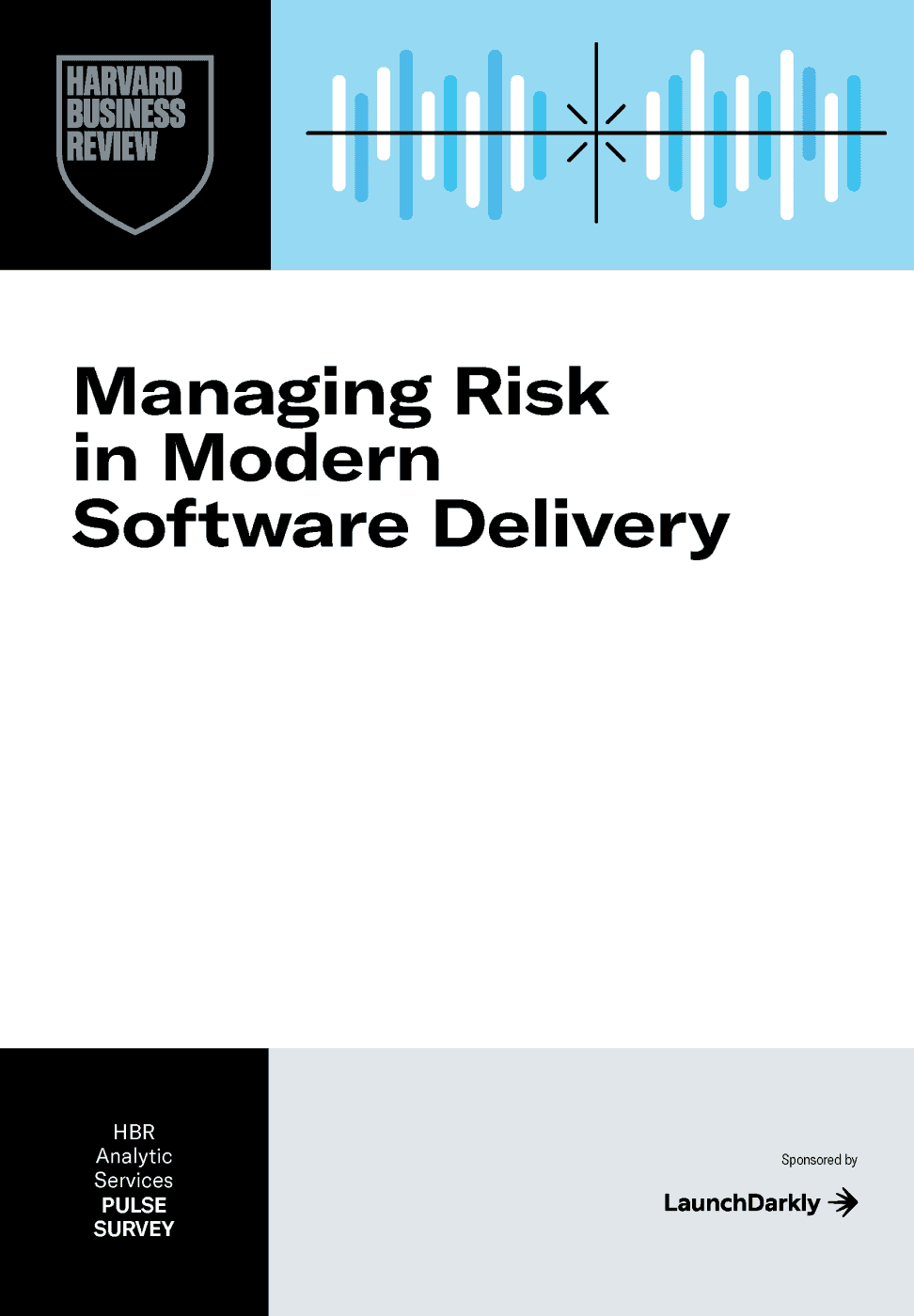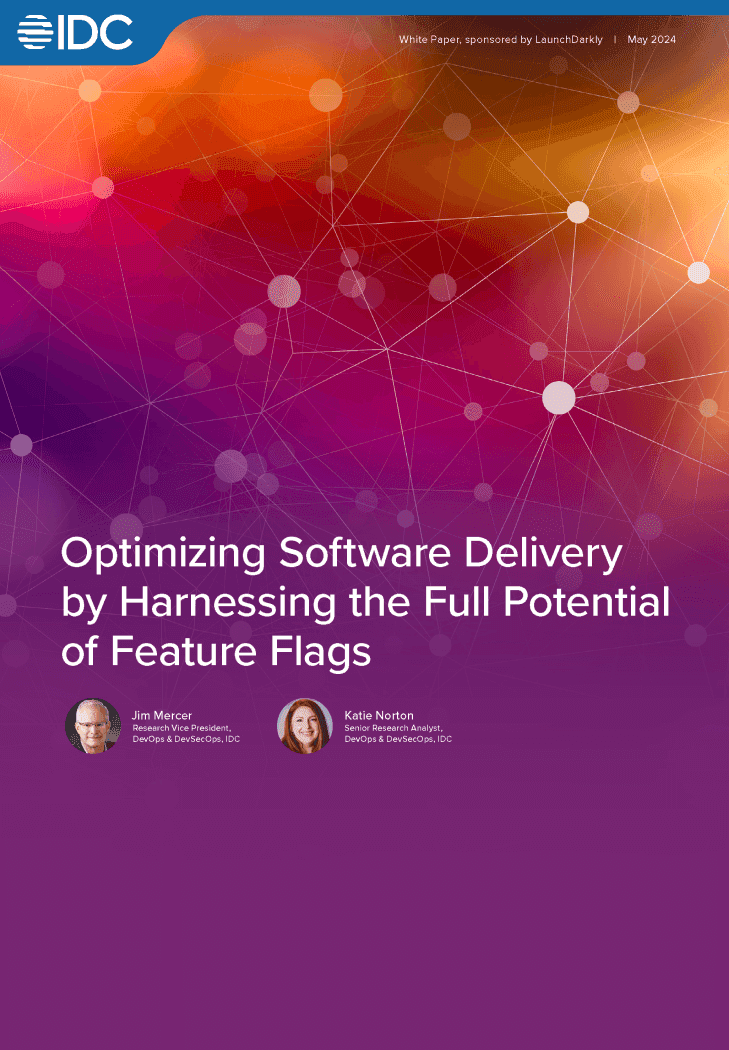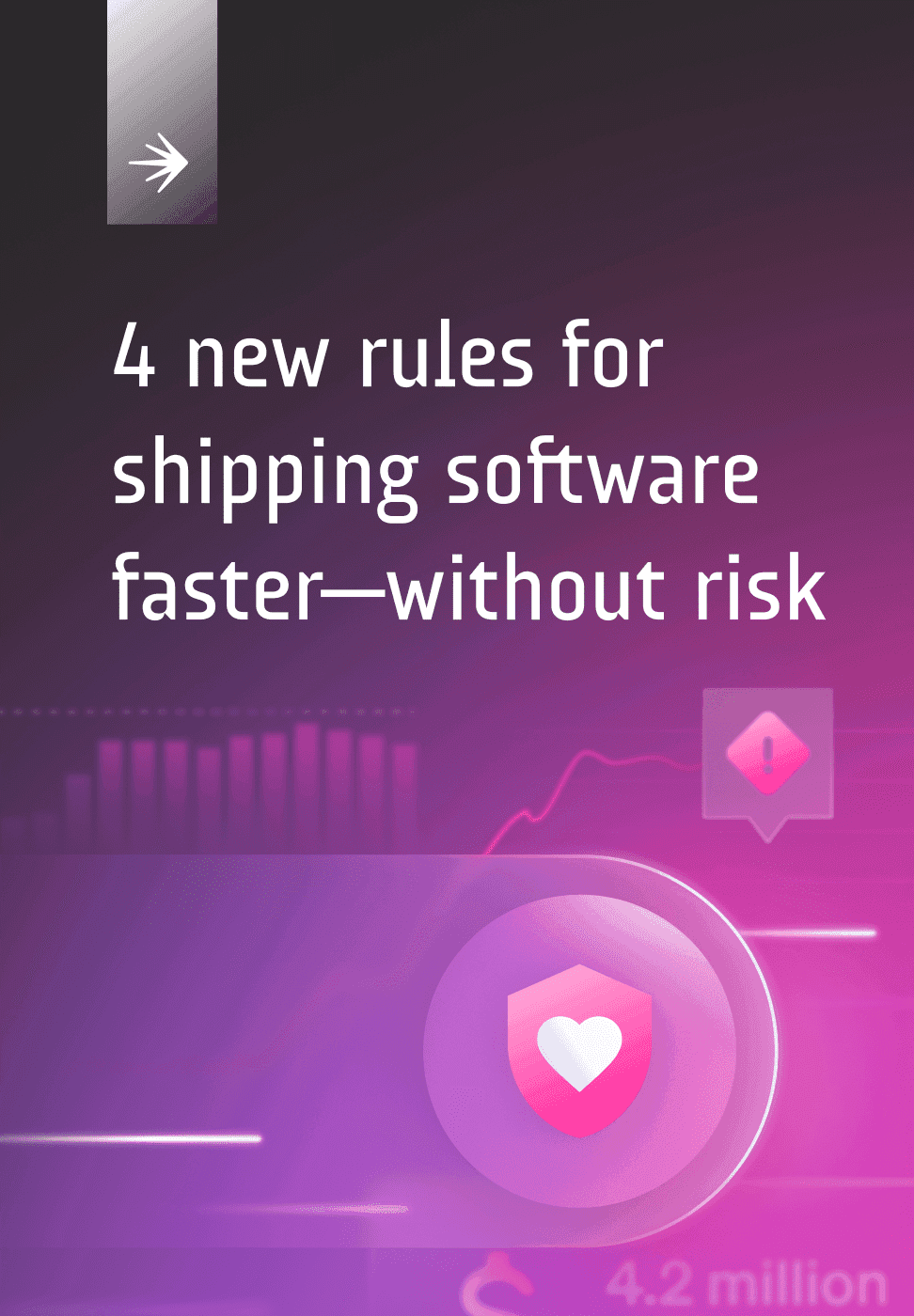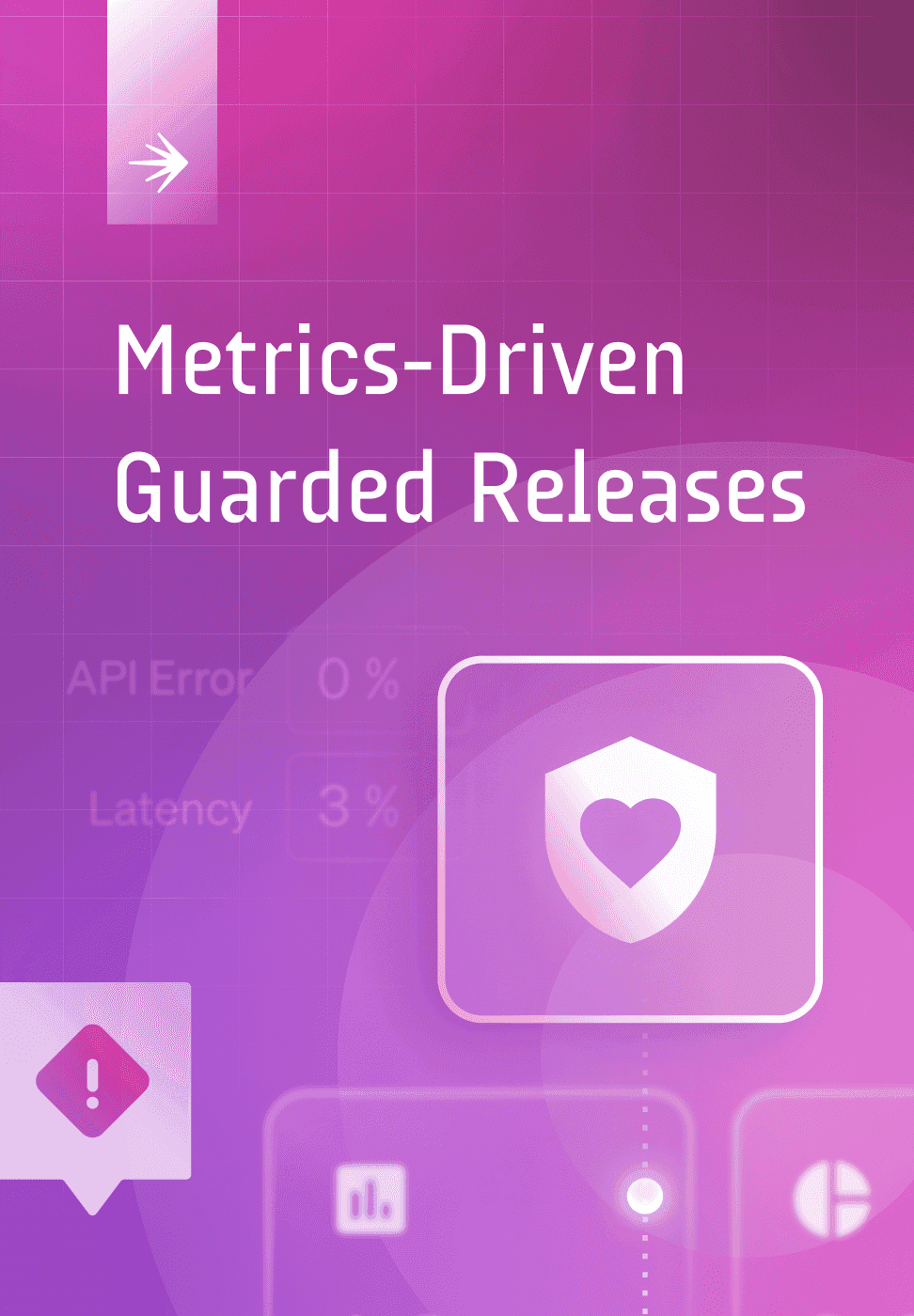Fast vs safe: The great dilemma in modern software development
3 keys to deploy more, risk less, and release with confidence.
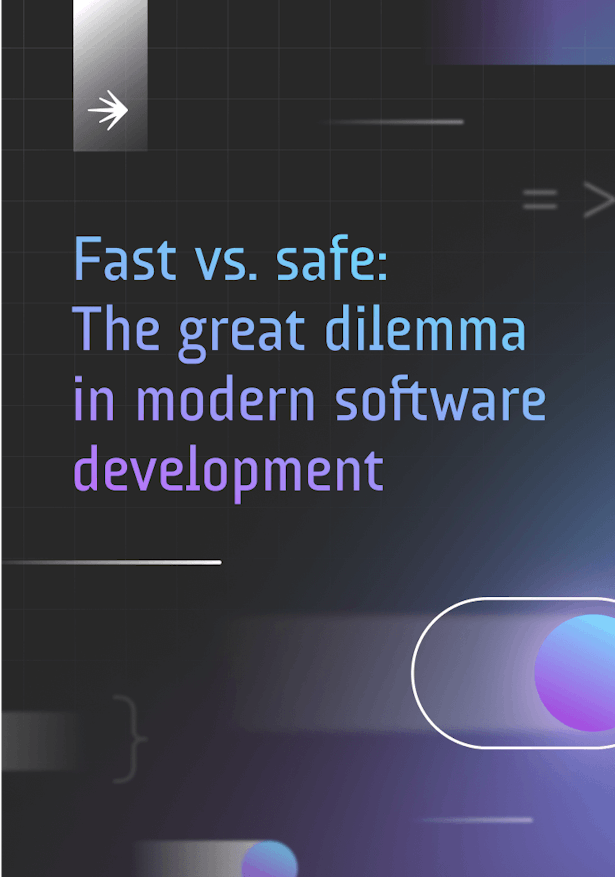
How LaunchDarkly can help
With LaunchDarkly, you no longer have to choose between slow-and-steady and fast-and-reckless software development. Our feature management platform lets you develop and deploy features faster, reduce risk, and release with confidence.
In this section, we’ll explore how three specific benefits of LaunchDarkly feature management address the challenges previously outlined.
Feature management
Feature management is a class of software development tools and techniques rooted in feature flags. Feature flags are conditional statements (e.g., if-else) that allow developers to deploy features to a production environment without making them visible to end users (i.e., decouple deploy from release).
Feature management enables teams to use flags on a massive scale across a variety of sophisticated use cases. Such use cases may involve targeting, multivariate flags, and experimentation as well as the need to support multiple teams, environments, and applications. Feature management increases developer productivity, reliability, and software quality.
For the TL;DR crowd, here’s a chart that previews the next section of content :

1. Safely test in production
LaunchDarkly lets teams release features for validation in production before exposing them to customers, reducing the likelihood of bugs and outages that impact the business.
Limit your blast radius
With LaunchDarkly, your developers can deploy features and code changes in production to a small subset of internal or external users—thus allowing production testing while limiting your blast radius. With fine-grained targeting, you can easily define a hyper-specific audience segment across any number of parameters, then deploy to that audience instantly with a simple toggle.
Without feature flags, when developers release a feature to production, they release it to all users and environments at once. If the feature causes a bug, it impacts all users (= high risk). Whereas, when using flags to release to a small subset of users or environments, that same bug would impact a much smaller audience (= much lower risk). Shrinking the blast radius of potential errors makes testing in production safer.
Release progressively
LaunchDarkly also enables progressive delivery, i.e., the ability to incrementally roll out new functionality, often starting with a small group of internal testers and expanding slowly and methodically to customer segments.
Our platform allows your teams to perform this in a controlled, automated way. For example, you can release a new feature to a random 5% of your user base on Day 1, then gradually expand to 15% on Day 3, then to 25% on Day 7, and so on until reaching 100%. Alternatively, you could be more intentional—choosing to roll out the feature to specific users, at particular times, or with other rules that you define. And you can schedule and automate the execution of these release patterns ahead of time.
Progressive delivery mitigates risk by enabling your teams to start small and catch problems early with real data. What’s more, it gives your development teams the control and confidence to move faster.
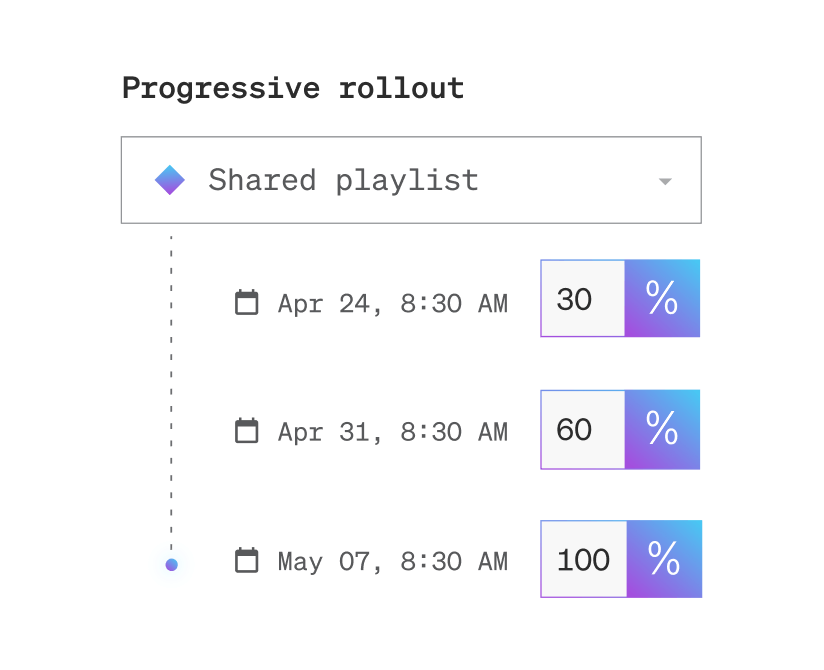
Build efficiently
By enabling developers to safely test in production, LaunchDarkly reduces the need for pre-production staging environments. Conventionally, developers will build, maintain, and test changes in staging, despite the fact that staging often fails to adequately mimic production. In skipping pre-production testing, teams cut costs and improve efficiency.
Another way LaunchDarkly increases developer efficiency is through enabling trunk-based development—a method of version control branch management that seeks to reduce complexity and user error. LaunchDarkly allows developers to wrap incomplete code in feature flags and merge it with the mainline (“trunk”) on a daily basis. If the mainline gets deployed to production, developers can rest easy knowing that their code is safe behind a flag. Trunk-based development is more efficient—and less painful—than periodically integrating long-lived feature branches as a part of big merge events. Ultimately, trunk-based development lets your teams ship fixes and changes to customers faster and with fewer conflicts.
Three-year cost savings achieved by using LaunchDarkly to reduce the need for pre-production staging environments: $3.37 million
2. Instantly deactivate broken code
Errors in production happen, but they shouldn't take down your entire application. LaunchDarkly acts as a safety net by letting your teams revert to a safe place at any time without disrupting customers.
Instantly release and roll back
LaunchDarkly offers kill switches that allow your teams to remotely turn a feature off in production, without having to push code through your deployment pipeline or change approval process. In the absence of feature flags, when an incident occurs, it's not uncommon for multiple engineers to spend hours—sometimes in the middle of the night—trying to resolve the issue.
But with LaunchDarkly, a single developer (or anyone, really) can toggle the flag associated with the error and instantly roll back to a working version of the application. Then, they move on with their life.
Automate outage remediation
Flag triggers in LaunchDarkly take the kill switch a step further by allowing you to “automatically” deactivate broken code. They provide an additional layer of risk mitigation, enabling your teams to resolve incidents in near real-time.
Our platform integrates with popular observability and application performance monitoring (APM) solutions. In cases where performance metrics like error rates exceed a certain threshold, your APM will trigger
LaunchDarkly to disable the feature flag associated with the errors automatically. Flag triggers are available for Datadog, Dynatrace, Honeycomb, New Relic One, and SignalFX. LaunchDarkly also supports generic triggers that you can use with other tools.
Maintain visibility
LaunchDarkly doesn’t just give your developers the power to instantly deactivate broken code—it also allows you to maintain visibility and track flag changes alongside other events across your team’s development tools. Unlike siloed solutions, LaunchDarkly unlocks the value of feature flags across your stack through integrations with Jira, ServiceNow, Slack, Microsoft Teams, and Datadog.
Here’s an example of how this might look in practice. Sam, a developer, builds a feature and wraps it in a LaunchDarkly feature flag. She connects the flag to an existing Jira issue, thus giving the broader product delivery team visibility into what she’s building for an upcoming release.
Using LaunchDarkly’s Approvals feature, Sam also assigns a change approver among one of the engineering managers. The approver must review and approve Sam’s feature before it can be deployed to production. When Sam creates this change approval request in LaunchDarkly, it automatically generates a standard change request in ServiceNow, thus ensuring Sam complies with company-wide change management policies. And the approver sees the request appear in Slack, where they can approve or deny it. Once approved (in Slack), the change gets deployed.
If Sam’s feature causes a bug, Sam and the ops team can look at their Datadog dashboard to see that (a) error rates are surging, and (b) Sam had just turned a flag on. They can quickly correlate the error to Sam’s feature and resolve the incident accordingly.
LaunchDarkly’s many integrations with other DevOps tools enables greater visibility for everyone in product delivery. This increases speed and reduces risk.
3. Spend more time on what matters
LaunchDarkly provides a scalable, reliable, and intuitive framework for enterprise feature management that empowers developers to spend more time on what matters.
Manage features globally
Serving 20 trillion flags daily, LaunchDarkly’s enterprise-grade architecture delivers unrivaled speed, security, and reliability—enabling your developers to consistently and securely ship features anywhere, without sacrificing performance.
LaunchDarkly’s architecture leverages server sent events (SSE) and streaming technology to deliver flag changes to endpoints within 200 milliseconds. Our resilience spans multiple layers, starting with a multi-region core service backed by over 100 points of presence globally. These layers, collectively known as our Flag Delivery Network, ensure that applications are always able to resolve flag values and evaluate rules even when connections are interrupted.
Supporting a feature management architecture like LaunchDarkly’s would be costly in the extreme if done in-house. And it would consume precious developer time that ought to be spent building revenue-driving software.
Control and automate releases
Businesses must deliver targeted product experiences to compete. But building targeting capabilities in-house requires heavy development work. With LaunchDarkly, your developers can release features and changes to exactly who you want, when you want with advanced and secure targeting. And you don’t have to bear the engineering burden.
Developers can leverage targeting to progressively release changes and automate feature entitlements, meanwhile business stakeholders (e.g., product managers) can easily run beta tests and deliver personalized product experiences. By letting LaunchDarkly handle targeting, your developers can get back to building and delivering the features customers demand.
With LaunchDarkly workflows, you can put even more time back into your developers’ days by automating, delivering, and controlling software with speed, safety, and consistency. Schedule changes to your flag’s targeting rules for a future date and time, mandate and manage approvals for changes to critical flags, and automate changes based on metrics from external tools. What’s more, use workflow templates to build a consistent release process in LaunchDarkly that can be reused across all your teams and features.
Enable operational scale
LaunchDarkly enables you to manage the feature lifecycle at every stage of development, from creation to archival, while also scaling consistent practices across all your development teams. These capabilities improve efficiency and save developers time in many ways.
For example, our approval workflows let developers move faster by decentralizing software change approvals. They also spare your change advisory board (CAB) from having to review every change by enabling peer reviews with the right safeguards in place. And they automate compliant release processes, so you can weave change controls into repeatable release templates and fix bugs in real-time while adhering to regulations.
Further, LaunchDarkly lets you advance platform standardization, so you can scale low-risk, efficient releases across your organization. It continuously delivers value by removing release bottlenecks, boosting developer productivity, and increasing customer satisfaction.
Your developers can also save time and avoid headaches by using code references to reduce technical debt and maintain impeccable code hygiene when deploying feature flags at scale. Automatically update flag references with every commit to GitHub, Bitbucket, and other Git tools to ensure that all relevant code is wrapped in the correct feature flags. And easily find and remove stale flags to keep your code base clean and consistent.
Ultimately, LaunchDarkly takes care of feature management, so your developers can devote their energy to projects that drive the business forward.

Guides & Ebooks
See allSign up for our newsletter
Get tips and best practices on feature management, developing great AI apps, running smart experiments, and more.





